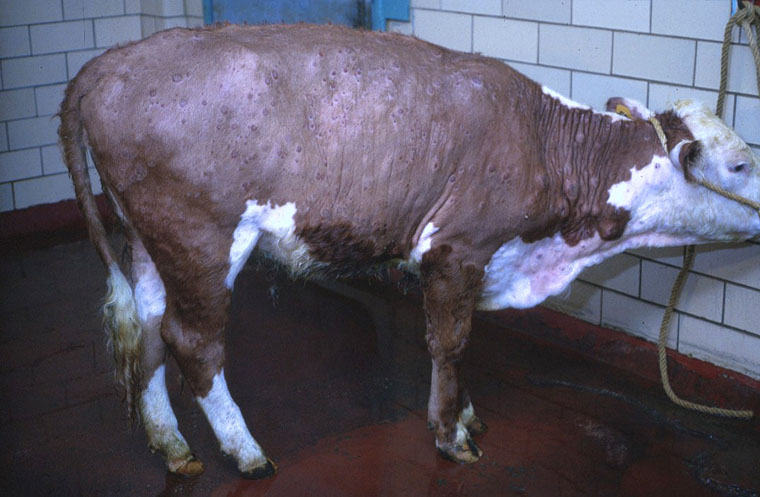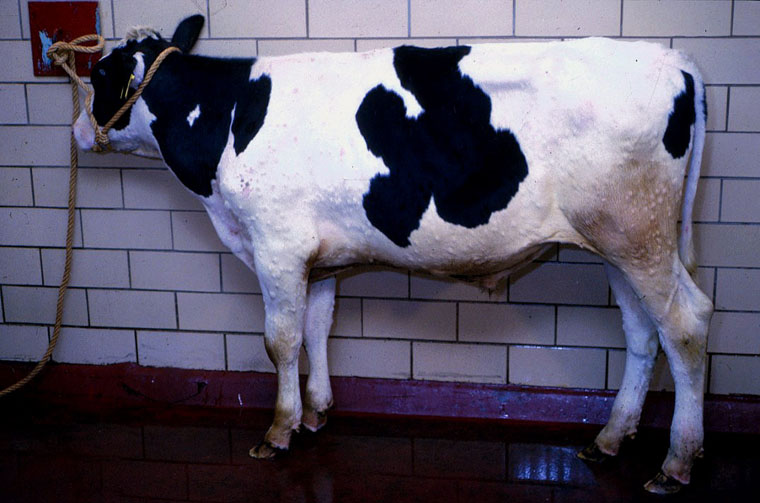
Lumpy skin disease in cattle
 Lumpy skin disease (LSD) is a highly infectious viral disease that affects all breeds of cattle and water buffalo. It does not affect other types of livestock or humans.
Lumpy skin disease (LSD) is a highly infectious viral disease that affects all breeds of cattle and water buffalo. It does not affect other types of livestock or humans.
LSD is primarily spread by biting insects. Insects such as mosquitoes, biting flies and possibly ticks mechanically transfer the virus. It can also be spread through direct contact between animals via secretions and excretions. Contaminated feed, water, vehicles and iatrogenic means (for example, repeated use of needles on different animals) can all spread the disease.
In addition, LSD may be shed in semen and may be present in milk of infected animals.
Lumpy skin disease in Australia
LSD is an exotic animal disease and Australia currently maintains a disease-free status for LSD.
The geographical distribution of LSD has been rapidly expanding through south Asia in 2021. In March 2022 Indonesia reported cases of lumpy skin disease on the island of Sumatra.
We are now on high alert for spread of the disease to Australia from the region.
An incursion of LSD would have severe negative animal welfare and economic implications along with substantial trade impacts.
Who do I call?
Lumpy skin disease is national notifiable disease which means an animal showing suspect signs of the disease must be reported to your veterinarian, a Local Land Services District Veterinarian (DV) on 1300 795 299 or the Emergency Animal Disease Watch Hotline on 1800 675 888.
Lumpy skin disease in cattle
Clinical signs
 Animals infected with the disease present with fever, depression, and characteristic skin nodules.
Animals infected with the disease present with fever, depression, and characteristic skin nodules.
Once in a herd, the disease is very difficult to eradicate due to subclinical infections and the presence of insects capable of spreading the virus.
Clinical signs include:
- Firm raised skin nodules up to 50mm in diameter develop around the head, neck, genitals and limbs. Nodules can develop on any part of the body.
- Scabs develop in the centre of the nodules after which the scabs fall off, leaving large holes that may become infected.
- Swelling of limbs, brisket and genitals may occur
- Reluctance to move and eat
- Nasal and ocular discharges
- Enlarged superficial lymph nodes
- Drop in milk production
- Abortion
Protecting your cattle
Biting flies and mosquitoes as well as ticks play a major role in spreading LSD between animals on the farm and between farms.
The best way to protect your cattle is by developing and implementing an integrated insect management plan. This involves a targeting all stages of the stable fly and mosquito life cycles to break the breeding cycle. It also needs to consider tick control.
Effective insect management on-farm includes:
- Monitoring larval and adult fly and mosquito numbers to know when to take action
- Environmental management to reduce the number of breeding and resting sites
- For example, fill potholes, remove standing water from containers, and ensure drains are free flowing
- Applying larvicide control in large bodies of water
- Applying adulticide control, such as residual spraying and fogging
- Maintaining chemical and mosquito control records
NOTE:
- ALWAYS use chemicals STRICTLY as per the product label
- SEEK PROFESSIONAL ADVICE if you are unsure about how to use a chemical
- CHEMICAL RESIDUES IN CATTLE ARE A TRADE AND FOOD QUALITY RISK
- MISUSE OF CHEMICALS CAN CREATE ENVIRONMENTAL RISKS TO BEES, WILDLIFE, AQUATIC LIFE AND PEOPLE
For more information on vector control for cattle, refer to:

